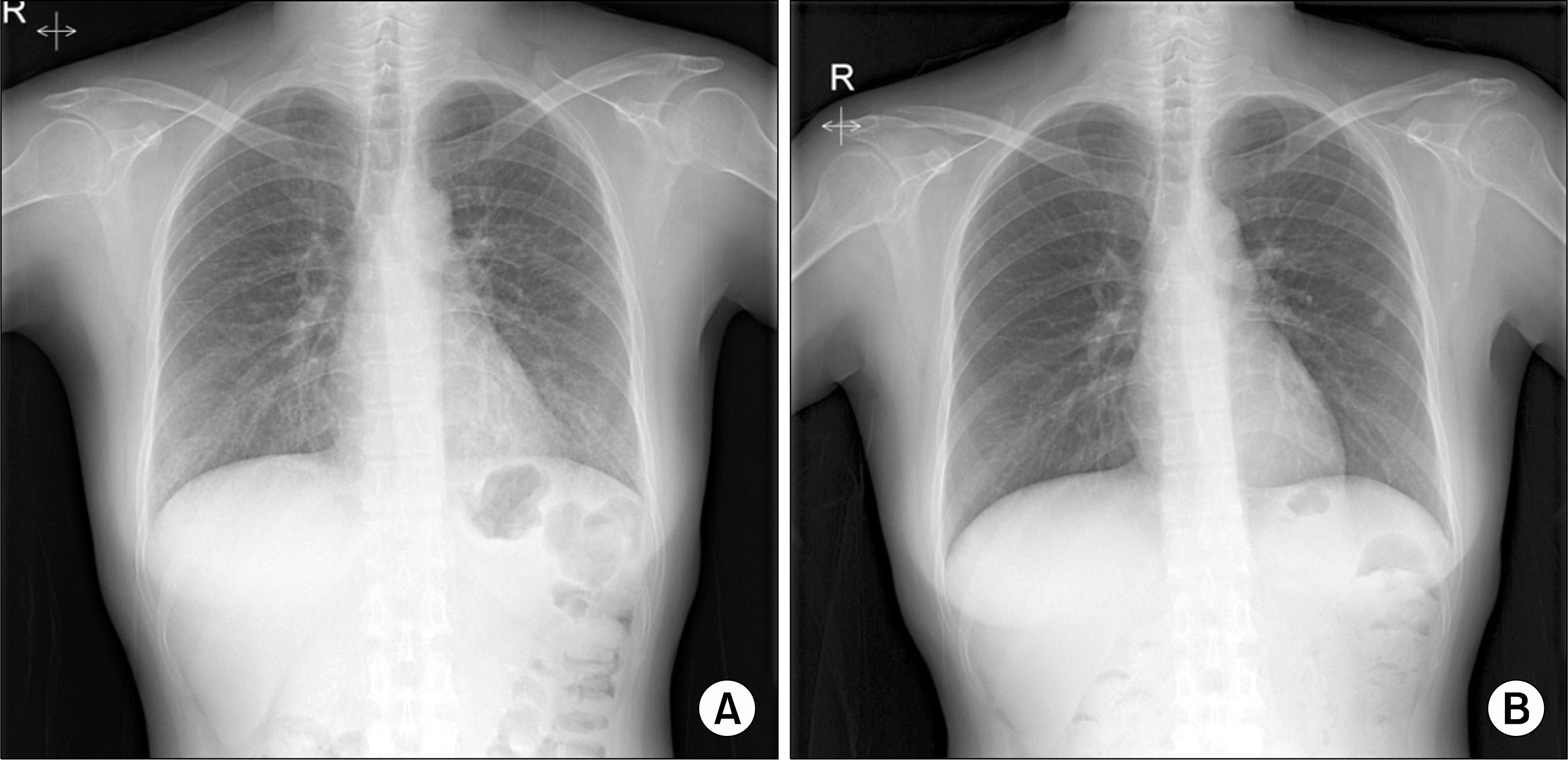Abstract
Pneumocystis jirovecii pneumonia (PCP) can be a life-threatening opportunistic infection after kidney transplantation, occurring most frequently in the first 12 months with the symptoms of dyspnea, cough, fever, and hypoxia. Prophylaxis for PCP is usually applied during the first 3 months to 1 year after transplantation, but late onset incidence of PCP can be detected. We report on a patient who developed PCP 9 years after renal transplantation. The patient showed indolent onset of acute respiratory distress and was treated with trimethoprim-sulfamethoxazole and corticosteroid therapy. Previous rescue treatment of acute cellular rejection with ongoing maintenance of an elevated level of immunosuppressants may have predisposed the patient to PCP.
References
1). Alangaden GJ, Thyagarajan R, Gruber SA, Morawski K, Garnick J, El-Amm JM, et al. Infectious complications after kidney transplantation: current epidemiology and associated risk factors. Clin Transplant. 2006; 20:401–9.

2). Radisic M, Lattes R, Chapman JF, del Carmen Rial M, Guardia O, Seu F, et al. Risk factors for Pneumocystis carinii pneumonia in kidney transplant recipients: a case-control study. Transpl Infect Dis. 2003; 5:84–93.
4). Fishman JA, Rubin RH. Infection in organ-transplant recipients. N Engl J Med. 1998; 338:1741–51.

5). Struijk GH, Gijsen AF, Yong SL, Zwinderman AH, Geerlings SE, Lettinga KD, et al. Risk of Pneumocystis jiroveci pneumonia in patients long after renal transplantation. Nephrol Dial Transplant. 2011; 26:3391–8.

6). Sepkowitz KA. Opportunistic infections in patients with and patients without acquired immunodeficiency syndrome. Clin Infect Dis. 2002; 34:1098–107.

7). Neff RT, Jindal RM, Yoo DY, Hurst FP, Agodoa LY, Abbott KC. Analysis of USRDS: incidence and risk factors for Pneumocystis jiroveci pneumonia. Transplantation. 2009; 88:135–41.

8). Eitner F, Hauser IA, Rettkowski O, Rath T, Lopau K, Pliquett RU, et al. Risk factors for Pneumocystis jiroveci pneumonia (PcP) in renal transplant recipients. Nephrol Dial Transplant. 2011; 26:2013–7.

9). Lufft V, Kliem V, Behrend M, Pichlmayr R, Koch KM, Brunkhorst R. Incidence of Pneumocystis carinii pneumonia after renal transplantation. Impact of immunosuppression. Transplantation. 1996; 62:421–3.
10). Arend SM, Westendorp RG, Kroon FP, van't Wout JW, Vandenbroucke JP, van Es LA, et al. Rejection treatment and cytomegalovirus infection as risk factors for Pneumocystis carinii pneumonia in renal transplant recipients. Clin Infect Dis. 1996; 22:920–5.

11). Walzer PD, Smulian AG. Pneumocystis species. Mandell GL, Bennett JE, Dolin R, editors. Mandell, Douglas, and Bennett's principles and practice of infectious diseases. 7th ed.Philadelphia: Churchill Livingstone/Elsevier;2010. p. 3377–90.

12). De Castro N, Xu F, Porcher R, Pavie J, Molina JM, Peraldi MN. Pneumocystis jirovecii pneumonia in renal transplant recipients occurring after discontinuation of prophylaxis: a case-control study. Clin Microbiol Infect. 2010; 16:1375–7.

13). Kidney Disease. Improving Global Outcomes (KDIGO) Transplant Work Group. KDIGO clinical practice guideline for the care of kidney transplant recipients. Am J Transplant. 2009; 9(Suppl 3):S1–155.
14). Flori P, Bellete B, Durand F, Raberin H, Cazorla C, Hafid J, et al. Comparison between realtime PCR, conventional PCR and different staining techniques for diagnosing Pneumocystis jiroveci pneumonia from bronchoalveolar lavage specimens. J Med Microbiol. 2004; 53(Pt 7):603–7.





 PDF
PDF ePub
ePub Citation
Citation Print
Print




 XML Download
XML Download